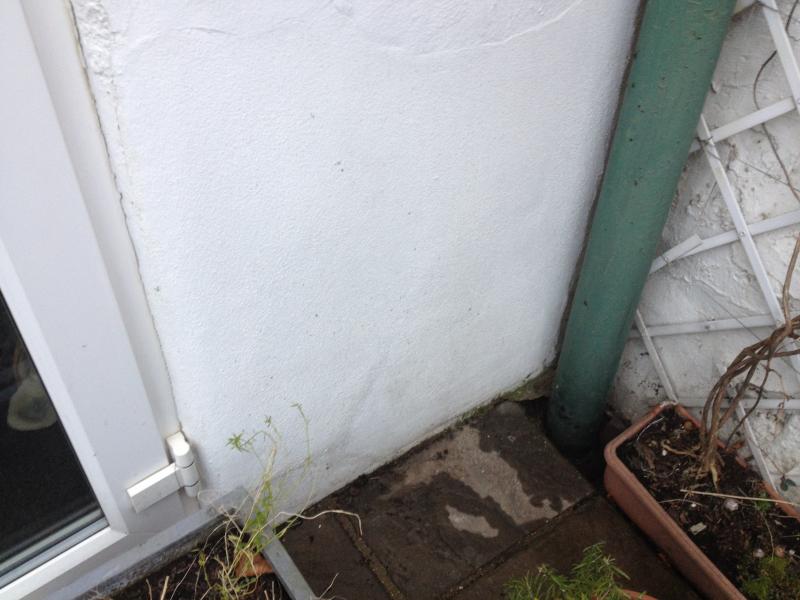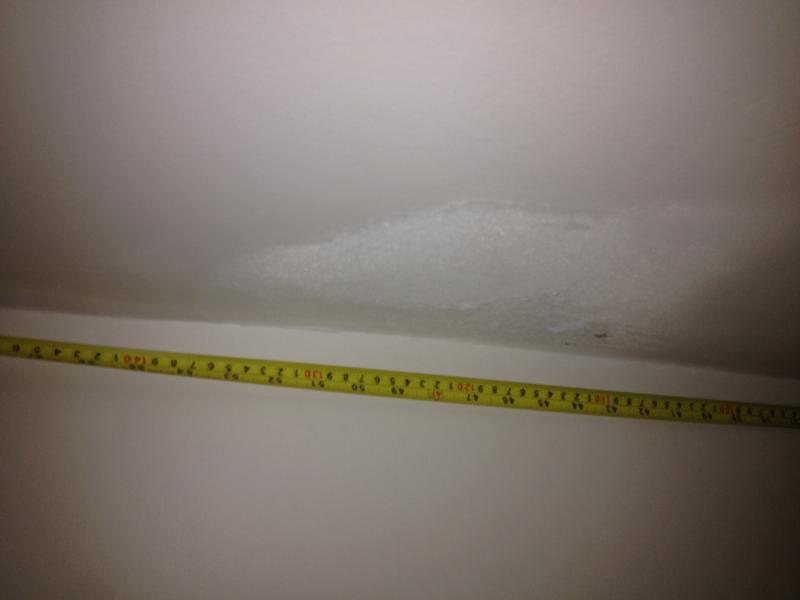Hi all. I was hoping some of the experts here might be able to help me out with a damp problem...
Situation: early 1900s house, solid brick walls with no cavity. The outside wall has a wide step up to the patio doors approx 10cm high, and is rendered down to ground level with a cement mix. Inside there was significant damp up to about 70cm above floor level with lots of crumbling plaster. Called in a chemical DPC contractor about six months ago who stripped the wall back to brick up to about 1m high, injected a new chemical DPC, lined the wall with a plastic damproofing membrane then plasterboarded and skimmed. The problem I have now is that having redecorated the room there are now large patches of paint flaking off the wall in a couple of places at a height of about 1m, above the height of the membrane, although no evidence of salts on the surface of the wall. The flaking started about 3 months ago, within a couple of weeks of the painting!
My question is, is this just the wall drying out or is the DPC failing to do it's job? The room was previously painted with kitchen paint, which formed a film over the wall. When they stripped the wall back they tore the paint film up the wall in the places the damp is showing through now, basically it appears the problem spots are where the film has gone but there is no membrane inside the wall. Should I be patient, wait for the wall to dry then repaint the damaged parts, or should I try to paint over the damage with a damp-proof paint (I suspect this may just move the problem elsewhere), or do I need to get the DPC contractor back in and accept he's going to trash the whole wall and I'll have to redecorate again?
Any advice very gratefully receieved!
Thanks.
Situation: early 1900s house, solid brick walls with no cavity. The outside wall has a wide step up to the patio doors approx 10cm high, and is rendered down to ground level with a cement mix. Inside there was significant damp up to about 70cm above floor level with lots of crumbling plaster. Called in a chemical DPC contractor about six months ago who stripped the wall back to brick up to about 1m high, injected a new chemical DPC, lined the wall with a plastic damproofing membrane then plasterboarded and skimmed. The problem I have now is that having redecorated the room there are now large patches of paint flaking off the wall in a couple of places at a height of about 1m, above the height of the membrane, although no evidence of salts on the surface of the wall. The flaking started about 3 months ago, within a couple of weeks of the painting!
My question is, is this just the wall drying out or is the DPC failing to do it's job? The room was previously painted with kitchen paint, which formed a film over the wall. When they stripped the wall back they tore the paint film up the wall in the places the damp is showing through now, basically it appears the problem spots are where the film has gone but there is no membrane inside the wall. Should I be patient, wait for the wall to dry then repaint the damaged parts, or should I try to paint over the damage with a damp-proof paint (I suspect this may just move the problem elsewhere), or do I need to get the DPC contractor back in and accept he's going to trash the whole wall and I'll have to redecorate again?
Any advice very gratefully receieved!
Thanks.



